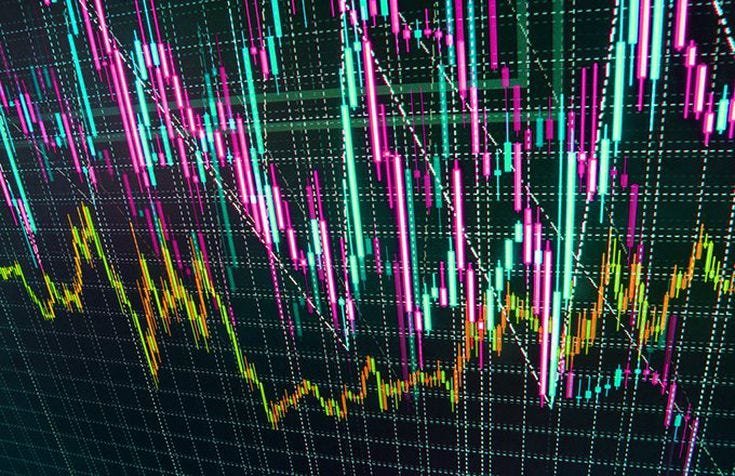In the fast-paced world of financial markets, the use of technology to automate trading strategies has become increasingly prevalent. Two prominent techniques that have reshaped the landscape of trading are Algorithmic Trading and High-Frequency Trading (HFT). In this article, we will delve into these innovative approaches, exploring their principles, advantages, and the impact they’ve had on the financial industry.
Understanding Algorithmic Trading
Algorithmic Trading, often referred to as algo trading, is the utilization of computer programs to execute trading orders. These programs are designed to follow specific instructions, criteria, or algorithms, which may include timing, price, or quantity. Here’s a closer look at the core aspects of algo trading:
Principles of Algorithmic Trading
- Automated Execution: Trades are executed automatically when predetermined conditions are met. This reduces the need for human intervention and ensures consistency.
- Diversification: Algorithms can handle multiple assets and strategies simultaneously, allowing for a diversified portfolio.
- Risk Management: Algo trading strategies often incorporate risk management rules to protect against significant losses.
- Speed and Efficiency: Algo trading can execute orders at high speeds, capitalizing on market opportunities swiftly.
Advantages of Algorithmic Trading
- Speed: Algorithms can execute trades within milliseconds, taking advantage of fleeting market conditions.
- Discipline: Algo trading enforces trading discipline by following predetermined rules, preventing impulsive decisions.
- Diversification: It allows for diversifying across various asset classes and strategies simultaneously.
- Risk Management: Algorithms can include stop-loss and take-profit parameters to mitigate risk.
High-Frequency Trading (HFT)
High-Frequency Trading (HFT) takes algorithmic trading to the extreme. HFT algorithms execute a large number of orders at astonishing speeds, often within microseconds. This subfield of algo trading relies heavily on technology and sophisticated algorithms to capture tiny price differentials or market inefficiencies.
Principles of High-Frequency Trading
- Ultra-High Speed: HFT relies on lightning-fast execution, capitalizing on minuscule price discrepancies.
- Arbitrage: HFT algorithms may engage in arbitrage, simultaneously buying and selling the same asset in different markets to profit from price differences.
- Market Making: Some HFT firms act as market makers, providing liquidity by continuously quoting bid and ask prices.
- Risk Management: HFT firms incorporate complex risk management algorithms to ensure the safety of their trading strategies.
Advantages of High-Frequency Trading
- Liquidity Provision: HFT firms contribute to market liquidity by actively participating in trading activities.
- Efficiency: HFT can improve market efficiency by quickly eliminating pricing disparities.
- Reduced Costs: By tightening bid-ask spreads, HFT can lower transaction costs for investors.
- Price Discovery: HFT can enhance price discovery, leading to more accurate market prices.
Read more: Risk Management and Big Data Analytics: Mitigating Uncertainty with Data-Driven Insights
Impact on the Financial Industry
Both algorithmic trading and HFT have left a significant mark on the financial industry. Their impact includes:
- Market Liquidity: The presence of HFT firms enhances market liquidity by continuously providing buy and sell orders. This liquidity benefits all market participants.
- Reduced Costs: Algo trading, including HFT, has led to reduced transaction costs, benefiting investors and traders.
- Efficiency: HFT has improved market efficiency by quickly correcting price discrepancies, ensuring that asset prices reflect their true value.
- Competition: The rise of algorithmic trading has increased competition in financial markets, potentially leveling the playing field for all participants.
- Market Volatility: Critics argue that HFT may contribute to market volatility, with rapid price swings caused by algorithmic trading.
Algorithmic Trading in Practice
Algorithmic trading has found applications in various financial markets, including stocks, bonds, currencies, commodities, and derivatives. These trading strategies can range from simple to highly complex, depending on the objectives of the trader or the fund. Some common algorithmic trading strategies include:
- Trend Following: Algorithms identify and follow market trends, buying when the market is bullish and selling when it’s bearish.
- Arbitrage: These algorithms look for price differences of the same asset in different markets, allowing traders to profit from those differences.
- Statistical Arbitrage: Using statistical analysis, algorithms identify and trade assets with historical price relationships or correlations.
- Market Making: In this strategy, algorithms continuously quote bid and ask prices, providing liquidity to the market. They aim to profit from the spread between buying and selling prices.
- Mean Reversion: Algorithms based on this strategy assume that prices will eventually revert to their historical mean or average. They buy when prices are below the mean and sell when they are above it.
High-Frequency Trading Techniques
High-Frequency Trading, as the name suggests, involves executing trades at an incredibly high speed. To achieve this, HFT firms utilize cutting-edge technology and have their servers located in close proximity to the exchange’s servers to minimize latency. Key techniques used in HFT include:
- Scalping: HFT firms engage in scalping by making small, rapid trades to capture minimal price changes. These trades are often executed within microseconds.
- Momentum Ignition: HFT algorithms recognize price trends and accelerate them by adding a significant volume of trades in the same direction.
- Statistical Arbitrage: HFT firms employ statistical models to detect deviations from historical price relationships and act on those deviations.
- Market Making: Many HFT firms act as market makers, continuously providing liquidity by quoting buy and sell prices for specific securities. They aim to profit from the spread between the bid and ask prices.
- News-Based Trading: Some HFT firms use algorithms to react to breaking news or economic announcements by quickly executing trades based on the information.
The Regulatory Landscape
The rapid rise of algorithmic trading and high-frequency trading has raised concerns about market stability and fairness. As a result, regulatory authorities around the world have implemented rules and oversight to mitigate risks associated with these practices.
- Circuit Breakers: Stock exchanges have implemented circuit breakers that temporarily halt trading if there is a significant price movement. This helps prevent market crashes triggered by automated trading algorithms.
- Risk Controls: Many exchanges require trading firms to implement risk controls to manage the potential impact of algorithmic errors. This includes pre-trade risk checks and kill switches to stop trading in emergencies.
- Market Access Rules: Regulatory bodies have set rules for granting and monitoring access to exchanges and markets for algorithmic trading firms. These rules ensure that only qualified and responsible firms participate.
- Transparency and Reporting: Regulatory authorities require trading firms to provide more transparent information about their trading activities and algorithms.
- Market Surveillance: Exchanges and regulators have enhanced their market surveillance capabilities to detect irregularities and market manipulation.
The Future of Algorithmic Trading and HFT
The future of algorithmic trading and HFT is likely to be shaped by advancements in technology, increasing regulatory scrutiny, and evolving market dynamics. While these techniques have significantly impacted the financial industry, they will continue to adapt to changing market conditions.
With the advent of machine learning and artificial intelligence, the sophistication of trading algorithms is expected to increase. These technologies can analyze larger datasets, identify complex patterns, and make more accurate predictions.
As regulatory authorities strive to strike a balance between innovation and market stability, it is crucial to maintain oversight while allowing room for technological advancements.
Read more: Customer Insights and Personalization: Revolutionizing Finance with Big Data Analytics
In conclusion, algorithmic trading and high-frequency trading are integral components of modern financial markets. They have brought efficiency, liquidity, and reduced costs but have also raised questions about market fairness and stability. As technology and regulations continue to evolve, these practices will adapt and continue to play a significant role in the financial industry.
In conclusion, algorithmic trading and high-frequency trading have revolutionized the financial industry by automating trading strategies and leveraging technology for maximum efficiency. While they have brought advantages like enhanced liquidity and reduced costs, they have also raised questions about market stability and fairness. The future of these techniques will depend on continued advancements in technology and regulatory oversight to ensure a balanced and efficient financial marketplace.
Image Source: Towards Data Science




